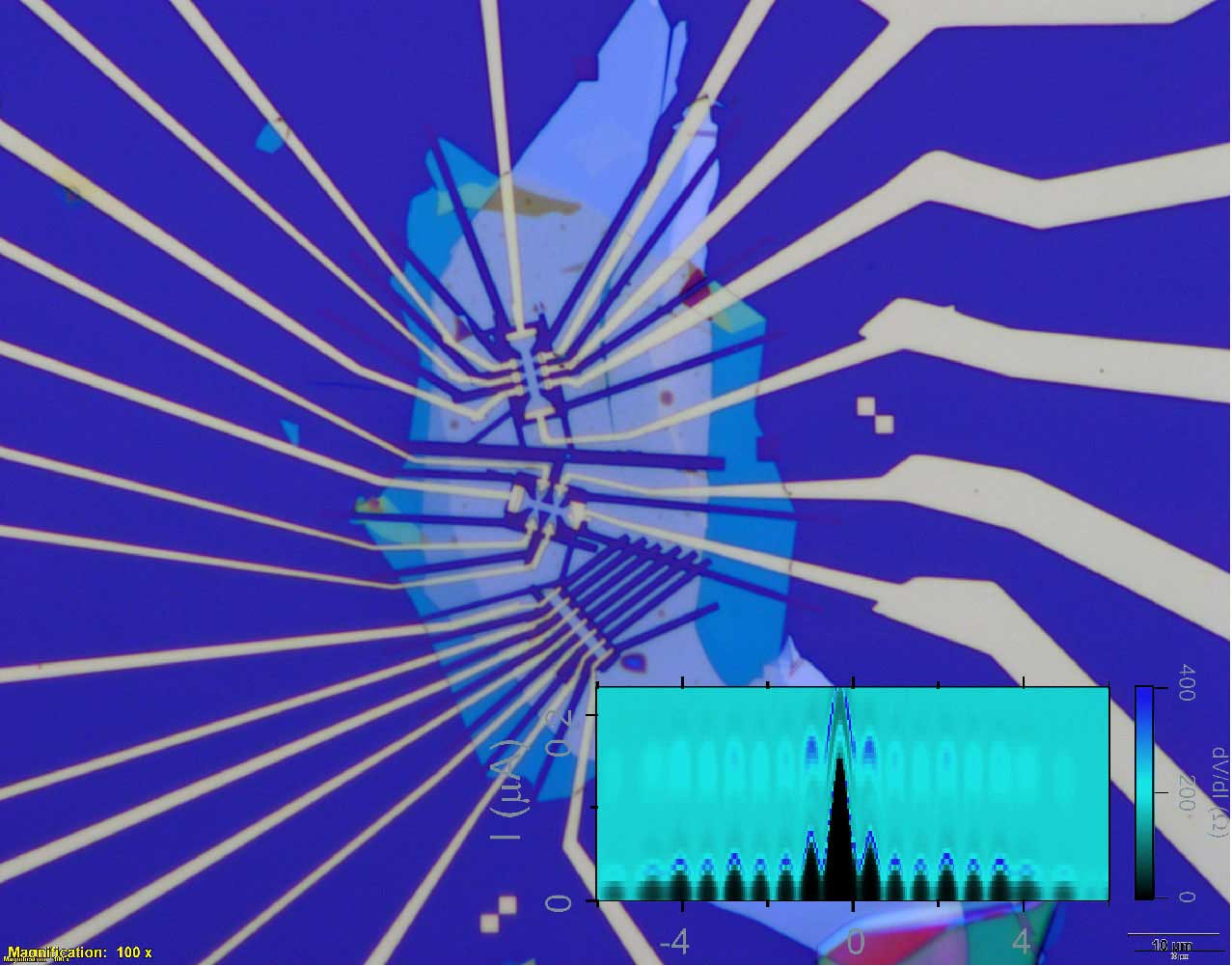suspended CVD graphene

Christian Schönenberger has been granted a second ERC Advanced Grant by the European Comission for the project TopSupra: University News ERC
Title: Engineered Topological Superconductivity in van der Waals Heterostructures
Project summary of TopSupra
Topological matter is a new research focus with great perspectives. These are insulators with an inverted “negative” bandgap and a conducting surface state. While the surface state in a topological insulator (TI) is composed of chiral fermions carrying charge and spin, in topological superconductors it is pinned to zero energy due to particle-hole symmetry and composed of fermions that carry neither charge nor spin. Instead, they are non-abelian fermions, Majorana and parafermions (MF/PF), that have been proposed for topological quantum computing. Evidence for MFs have been found in nanowires. However, the scaling-up challenge requires a platform in which networks of MFs can be realized. Here, we propose to use graphene-based van der Waals heterostructure for this purpose. The unprecedented versatility is enabled by combining high-mobility graphene with other layered materials, such as transition-metal dichalcogenide, few-layer ferromagnets and superconductors (SCs). This allows to design topological systems, e.g. the quantum spin, anomalous and valley Hall effect, by combining Zeeman energy, spin-orbit and pairing interaction. We will design 2D quantum matter using different approaches, including strain tuning and the dressing of the bandstructure by photon-fields (Floquet TI), and couple it to SCs to induce topological superconductivity. We will use our expertise from studies of Cooper-pair splitters to not only add pairing in a single edge-state, but also between different edge-states, beneficial for obtaining MFs and more exotic quasiparticles. We will apply advanced high-frequency techniques, e.g. emission and noise – in addition to local tunneling spectroscopy – to characterize the in-gap states and to prove their topological nature. We will deliver a versatile technology with which new states of matter can be obtained in a platform which can be engineered in a top-down manner into networks allowing for quantum-state manipulation of MFs and PFs.










